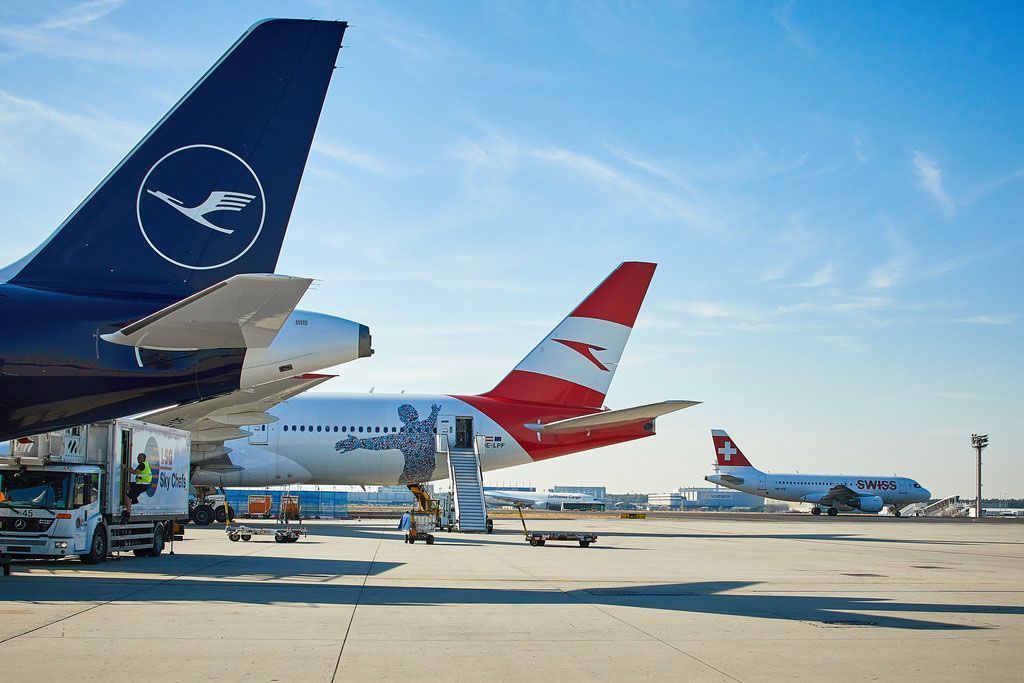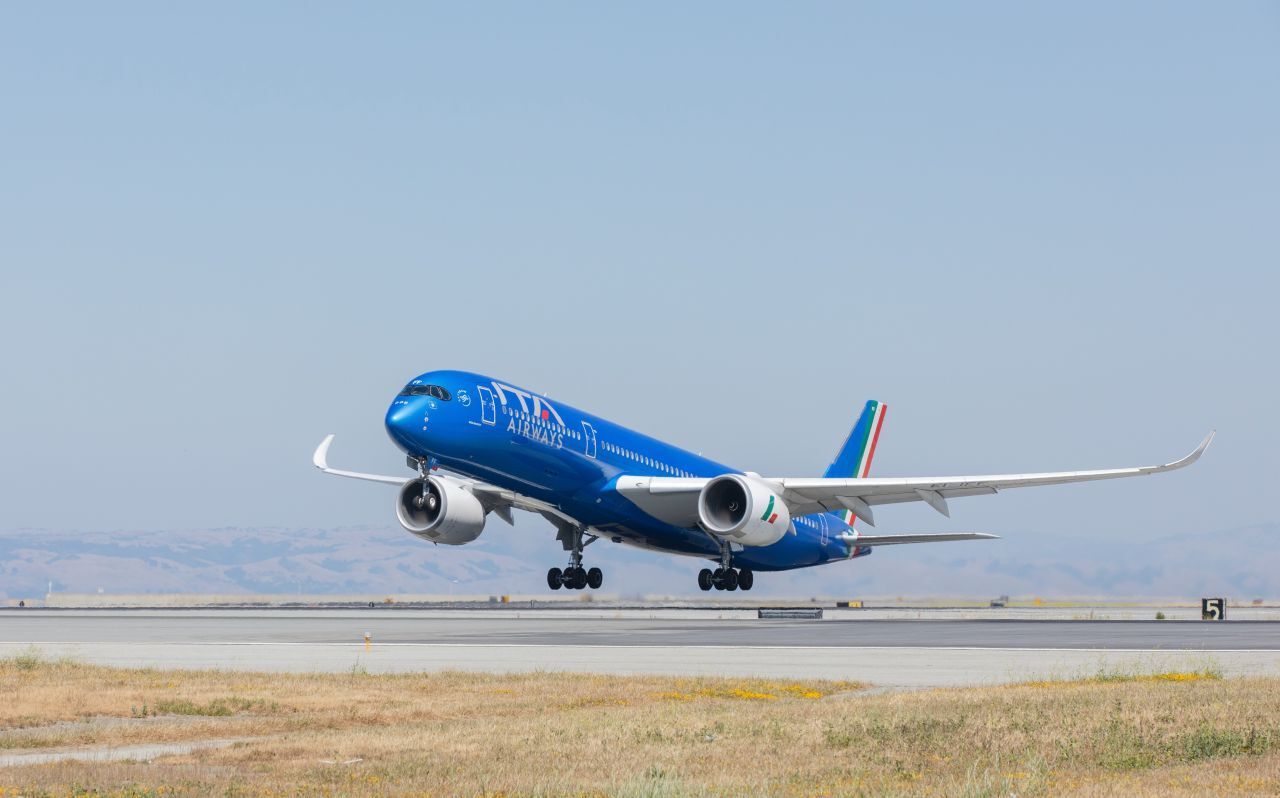Following a dramatic year in 2020, Lufthansa Group Airlines prepared to offer up to 70 percent of capacity again in the short term.
Demand fell dramatically in the year of the Corona pandemic and the associated travel restrictions. Revenue at the Lufthansa Group fell to 13.6 billion euros in 2020 (previous year: 36.4 billion euros). Despite rapid and extensive cost reductions, the Lufthansa Group had to report an Adjusted EBIT of minus 5.5 billion euros (previous year: profit of 2.0 billion euros). The Adjusted EBIT margin was minus 40.1 percent (previous year: plus 5.6 percent). The operating cash drain in the fourth quarter of 2020 was around 300 million euros per month. Progress in restructuring limited the impact of the intensified pandemic situation on earnings. Personnel costs were significantly reduced through workforce reductions, crisis agreements with social partners and short-time working. At year-end 2020, the number of employees was 110,000, around 20 percent lower than the previous year. The reported EBIT loss was around 1.9 billion euros lower at minus 7.4 billion euros, mainly due to exceptional write-downs on aircraft and goodwill. Net income amounted to minus 6.7 billion euros (previous year: 1.2 billion euros).
Carsten Spohr, CEO of Deutsche Lufthansa AG, says, “The past year was the most challenging in the history of our company – for our customers, our employees and our shareholders. Travel restrictions and quarantine have led to a unique slump in demand for air travel. Now internationally recognized, digital vaccination and test certificates must replace travel bans and quarantine so people can once again visit family and friends, meet business partners or learn about other countries and cultures.”
Looking at the future development of the Lufthansa Group, Carsten Spohr said, “The unique crisis is accelerating the transformation process in our company. 2021 will be a year of redimensioning and modernization for us. The focus will remain on sustainability: We are examining whether all aircraft older than 25 years will remain on the ground permanently. From the summer onwards, we expect demand to pick up again as soon as restrictive travel limits are reduced by a further roll-out of tests and vaccines. We are prepared to offer up to 70 percent of our pre-crisis capacity again in the short term as demand increases. With a smaller, more agile and more sustainable Lufthansa Group, we want to maintain our leading position worldwide and secure the jobs of around 100,000 employees in the long term.”
Lufthansa Cargo achieves record result
In contrast to the passenger airlines, the Group’s cargo division benefited from rising demand over the course of the year. Buoyed by a strong increase in average yields amid persistently high demand, Lufthansa Cargo achieved a record result with an Adjusted EBIT of 772 million euros (previous year: 1 million euros) despite a 36 percent decline in freight capacity.
Capital expenditure at the Lufthansa Group was reduced by around two-thirds year on year in 2020 to 1.3 billion euros (previous year: 3.6 billion euros), mainly on the basis of extensive agreements with aircraft manufacturers. These provide for the postponement of aircraft deliveries in 2021 and beyond, so that annual capital expenditure will be lower than originally planned also in future years. Adjusted free cash flow was negative 3.7 billion euros (previous year: 203 million euros), with around 3.9 billion euros paid out for ticket reimbursements alone. This was offset by 1.9 billion euros in new bookings. The remaining cash outflow was limited by strict management of receivables and payables.
Net debt including lease liabilities increased to around 9.9 billion euros (previous year: 6.7 billion euros). Pension liabilities increased by 43 percent to 9.5 billion euros (previous year: 6.7 billion euros), mainly due to the drop in the interest rate used to discount pension obligations to 0.8 percent (previous year: 1.4 percent).
As of December 31, 2020, the Lufthansa Group had available liquidity of around 10.6 billion euros, of which 5.7 billion euros related to unutilized government stabilization measures. By the end of 2020, the Lufthansa Group had drawn down government stabilization funds of around 3.3 billion euros, of which 1 billion euros has already been repaid in the meantime.
In the second half of 2020, the Group successfully returned to the capital market and raised funds of 2.1 billion euros via bonds and aircraft financing. In addition, on February 4 the Group placed two bonds with a total volume of 1.6 billion euros, the proceeds of which were used among other things to repay the KfW loan of 1 billion euros. Overall, the long-term refinancing of all financial liabilities due in 2021 is thus secured.
“The latest transactions have shown how much confidence the market has in our company. The Lufthansa Group is well financed beyond 2021. This is also helped by the previously unused elements of the stabilization package, which we can draw on as needed to further strengthen our balance sheet,” said Remco Steenbergen, Chief Financial Officer of Deutsche Lufthansa AG.
Traffic figures for 2020
In 2020, the airlines of the Lufthansa Group offered around one third of the flights or a capacity (available seat kilometers) of 31 percent compared to the previous year. At 36.4 million, the number of passengers was 25 percent of the previous year’s figure, resulting in a load factor of 63 percent, 19.3 percentage points lower than previous year.
Due to the elimination of belly cargo capacity on passenger aircraft, cargo capacity declined by 39 percent. Freight kilometers sold fell by 31 percent to 7,390 million metric tons in the same period. At the same time, the load factor rose by 8.4 percentage points to 69.7 percent. Average yields rose by around 55 percent due to the shortage of supply.
The Lufthansa Group benefited from its hub system. Unlike competitors, who offer only point-to-point connections, the Lufthansa Group airlines were able to bundle the low traffic volumes at their hubs and thus maintain important connections. In addition, the close networking between passenger and cargo traffic at the hubs has made it possible to secure global supply chains.
Outlook
Last year, the number of employees fell by around 28,000. In Germany, a further 10,000 jobs will be reduced or the corresponding personnel costs will have to be compensated. The Group fleet will be reduced to 650 aircraft in 2023. By the middle of the decade, the Group expects the capacity level to return to 90 percent. In addition, the Group is examining the disposal of subsidiaries that offer only minor synergies with the core business.
Whenever restrictions are eliminated, bookings tend to increase steeply in the respective traffic area. For the full year 2021, the Group expects capacity on offer to increase to 40 to 50 percent of 2019 levels, and the expectation remains that positive operating cash flows will be generated when capacity on offer is above 50 percent. With the strategic expansion of the tourism business and a continued strong Lufthansa Cargo, the Group is in a position to take advantage of market opportunities in the short term. The boom in the cargo sector continues.
The average monthly operating cash drain, excluding working capital changes, capital expenditure and one-off and restructuring expenses, is expected to be limited to around 300 million euros in the first quarter of 2021.
“Thanks to our recent financing measures, we have sufficient liquidity to withstand a market environment that remains difficult. The next step is to strengthen our balance sheet and reduce debt. In doing so, we will reduce our costs through successful restructuring. Our crisis and cost management has taken effect much faster than originally planned. At the same time, our business has recovered more slowly than we had initially hoped. In addition to repaying the government stabilization funds, the goal of our financial strategy is for the financial markets to re-evaluate our creditworthiness to investment grade in the medium term,” says Remco Steenbergen.
The Lufthansa Group expects the operating loss, measured in terms of Adjusted EBIT, to be lower in 2021 than in the previous year.













